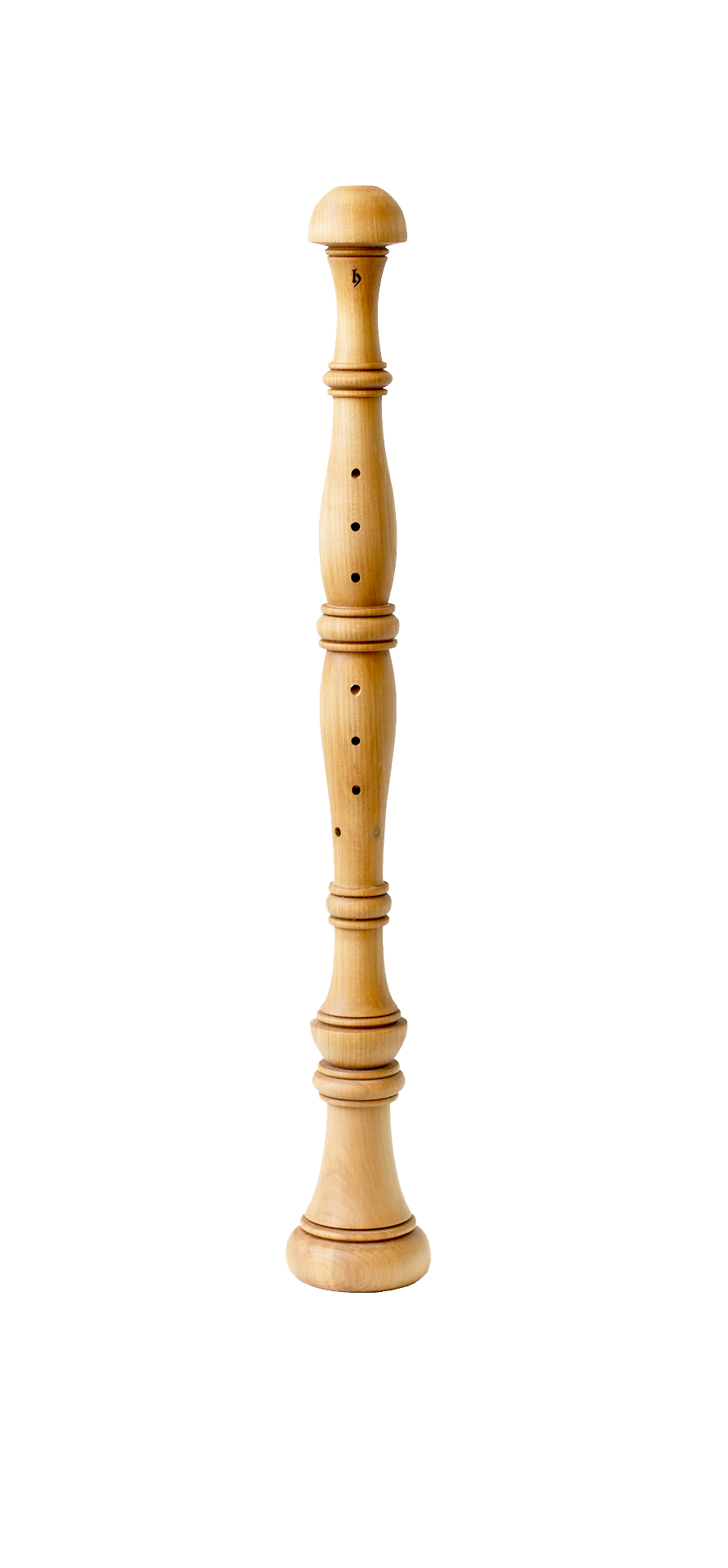Bassanelli
 Michael Pratorius described a set of straight double reed instruments invented by Johann Bassano that were quieter than shawms. These instruments show up in the inventories of the Graz court chapel in 1577/1590, the Accademia Filarmonica in Verona in 1593 and the Kassel court chapel in 1613. As far as we know, none of these instruments have survived till the present time. Praetorius mentions that the advantage of the Bassanelli is that they were made in several sections, which allowed them to be played in different pitches. His soprano corresponds to a tenor in d, his alto/tenor plays like a bass in G and his bass would be a great bass in CC in modern terminology. Probably those Italian instruments, which he examined at Kassel were made to a much higher pitch than the one at the court chapel, so the set could have been tuned to c, F or B-flat. In my version of these instruments the outside shape follows Praetorius’ drawings and the bore is narrower than that of a shawm.
Michael Pratorius described a set of straight double reed instruments invented by Johann Bassano that were quieter than shawms. These instruments show up in the inventories of the Graz court chapel in 1577/1590, the Accademia Filarmonica in Verona in 1593 and the Kassel court chapel in 1613. As far as we know, none of these instruments have survived till the present time. Praetorius mentions that the advantage of the Bassanelli is that they were made in several sections, which allowed them to be played in different pitches. His soprano corresponds to a tenor in d, his alto/tenor plays like a bass in G and his bass would be a great bass in CC in modern terminology. Probably those Italian instruments, which he examined at Kassel were made to a much higher pitch than the one at the court chapel, so the set could have been tuned to c, F or B-flat. In my version of these instruments the outside shape follows Praetorius’ drawings and the bore is narrower than that of a shawm.
My instruments are tuned either to a’= 460/465 or 440 Hz. A second top joint gives you the possibility to play at both pitches.
You still have the possibility to play at other pitches by extending the joints.
I offer either a set of d,G,CC or c, F B-flat instruments made in field maple or service wood.
Alta mira
 Praetorius’ Syntagma Musicum/de Organographia (1619) and catalogued inventories from the 16th and 17th centuries (Graz 1590), (Kassel 1613) give us proof of the existence and use of Bassanelli in that period. Praetorius describes Bassanelli in tenor, bass and great bass range. The inventories list soprano and alto instruments, in Kassel there is an alto and a soprano that are differently shaped ( aber ungleich an der Forma). This could be an indication of the existence of instruments that Virgiliano (Il Dolcimeleo) calls Alta mira and Armilla.
Praetorius’ Syntagma Musicum/de Organographia (1619) and catalogued inventories from the 16th and 17th centuries (Graz 1590), (Kassel 1613) give us proof of the existence and use of Bassanelli in that period. Praetorius describes Bassanelli in tenor, bass and great bass range. The inventories list soprano and alto instruments, in Kassel there is an alto and a soprano that are differently shaped ( aber ungleich an der Forma). This could be an indication of the existence of instruments that Virgiliano (Il Dolcimeleo) calls Alta mira and Armilla.
I used Virgilianos descriptions to reconstruct an alto instrument either in g or f. Woodcarvings as shown in Virgilianos drawing are optional.

 Change language
Change language Deutsch
Deutsch Français
Français